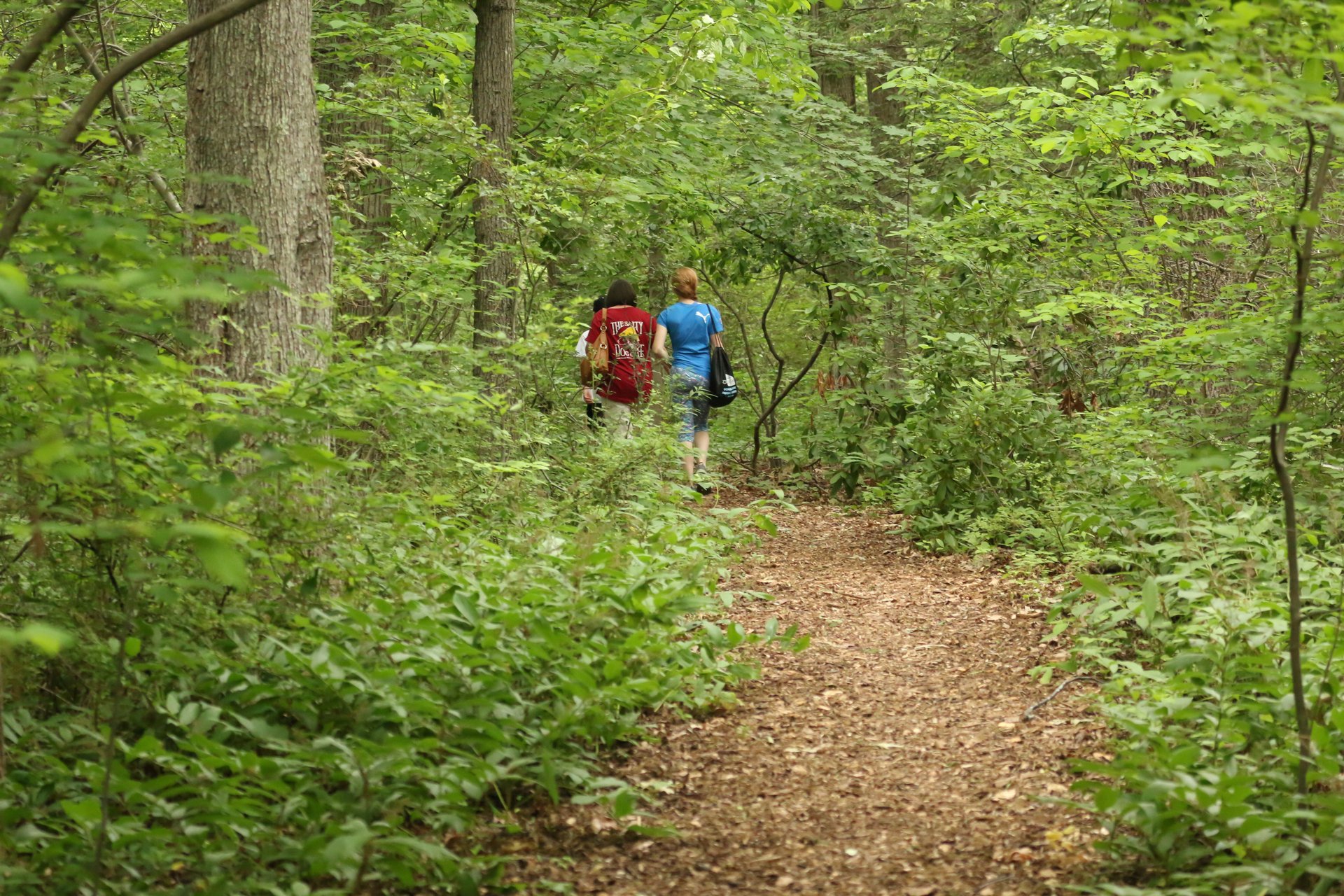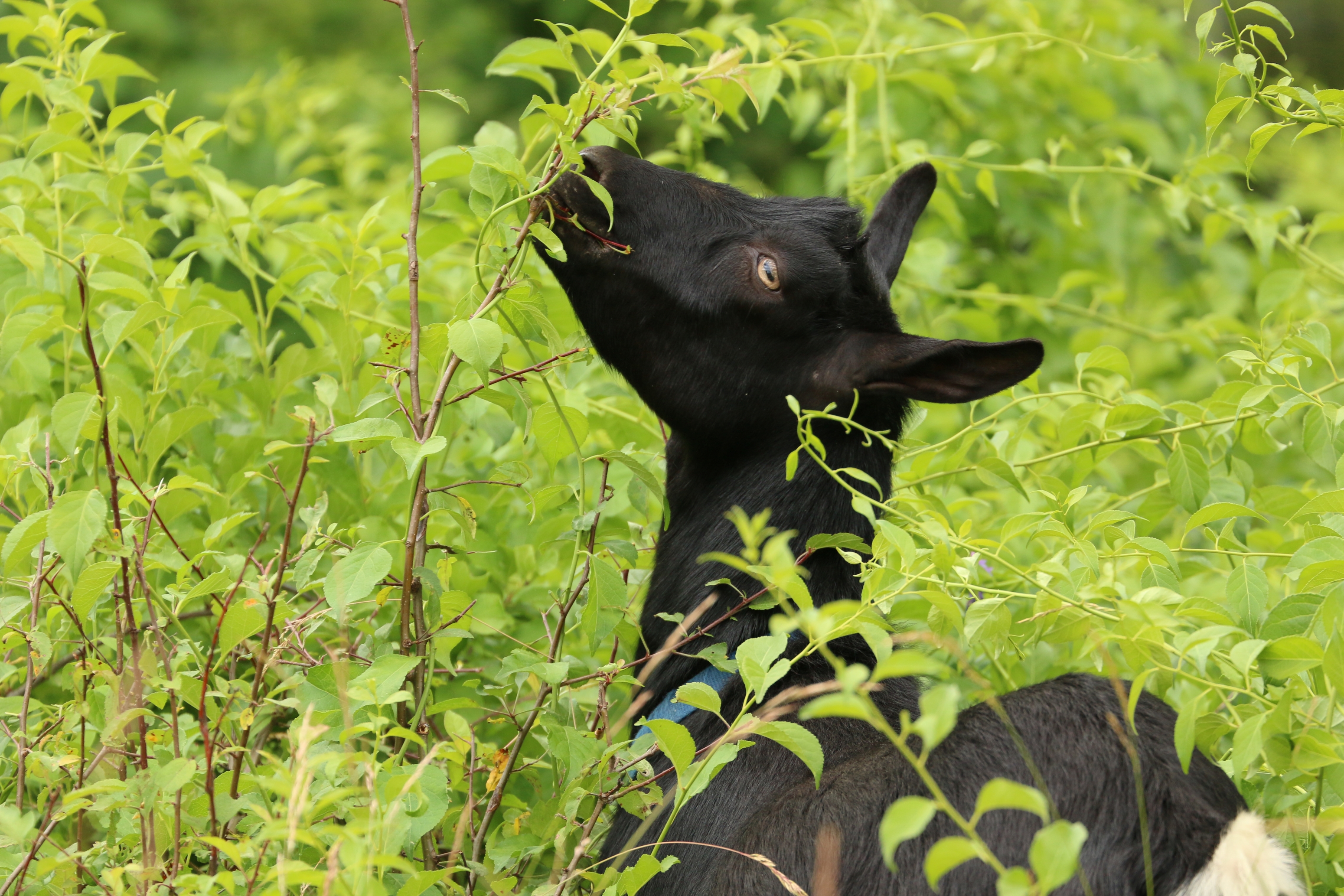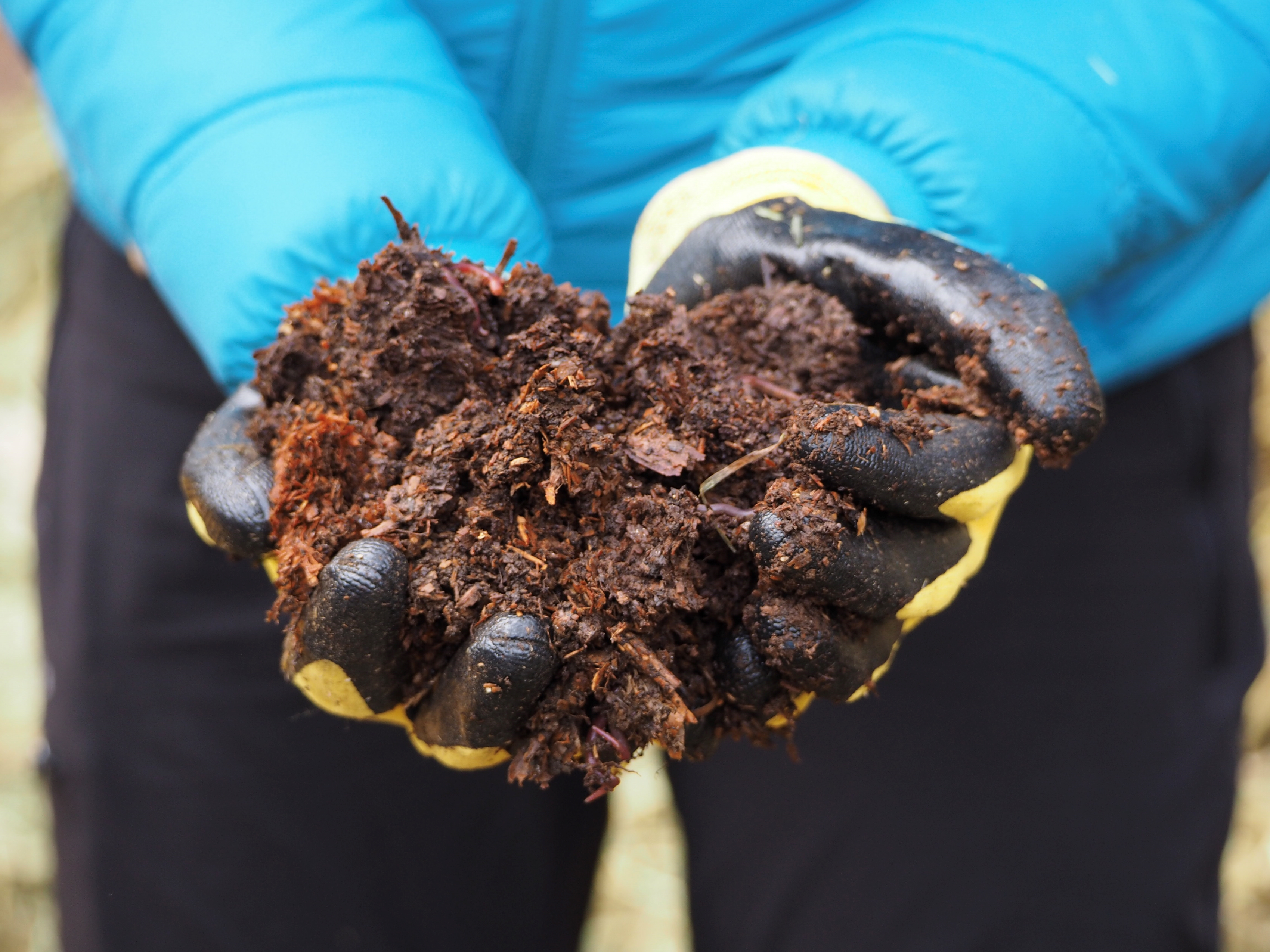At the bottom of the hill behind the visitor center at Habitat Education Center & Wildlife Sanctuary in Belmont sits a nearly 100-year-old repurposed greenhouse home to a herd of goats. Their job? Dining on invasive plants.
Back in 2010, when Sandy Vorce, Habitat's property manager, learned of the unique roles goats and sheep can play in property management, she joined forces with a friendly neighbor. The neighbor, who had goats and sheep, brought her herd to the sanctuary daily to start chipping away at invasive plant growth around the property. After the neighbor moved to New Hampshire with her sheep, Habitat decided to welcome the remaining four-legged property stewards, the goats, permanently to the team.
A Helping Herd
Natural browsers, goats prefer to eat broad-leaved and woody-stemmed plants, making them great at managing invasives. Luckily, they love buckthorn, multiflora rose, and bittersweet, which make up most of the invasive species in Habitat’s meadows. When the goats eat the leaves and stems of the unwanted growth, light and air can reach the native undergrowth, leveling the competitive playing field. By eating unwanted woody stems, fields are less likely to revert to forest, maintaining a valuable meadow ecosystem at the sanctuary.
Goats can clear an area in a matter of days or weeks depending on the size and plant mix of a parcel. Unlike our property equipment, the goats have a handy ability to get into the nooks and crannies where tools might not fit, like in the corners and edges of fencing. Property staff can then focus on more targeted invasive removal and restoration planting.
After the herd eats, they produce nutrient-dense compost used all around the sanctuary to encourage native species to thrive. This rich compost is integrated into the soil throughout the community gardens, our demonstration space, newly seeded areas, and more.
Teamwork Makes the Dream Work
Volunteers play a vital part in our goat operations. Not only do volunteers provide enrichment for the goats when they’re not busy chowing down, but they also encourage rotational grazing. It’s important not to over-graze an area and begin nibbling on something that should be saved. So, from May to October volunteers rotate the goats once they’ve removed most of the unwanted brush and move along to the next grazing area.
Volunteers often spread native grass seeds in the spaces the goats clear. As the herd moves around, their hooves press the seeds into the dirt, and their droppings provide nutrients for the seed to germinate.
To naturally protect against worms and other parasites located closer to the ground, goats prefer to eat higher vegetation. Eating higher up means the base of the plants is left in the ground and will likely re-grow without manual removal or treatment. In meadow restoration areas, a group of volunteers will often follow up on a recently browsed area with weed wrenches to pull out the remaining invasive plant roots.
During your next visit, keep an eye out for the herd traveling through the sanctuary, or in their secondary pen in the lower meadow.
Stay Connected to Habitat
Don't miss a beat on all the ways you can get outdoors, celebrate nature, and get involved.





